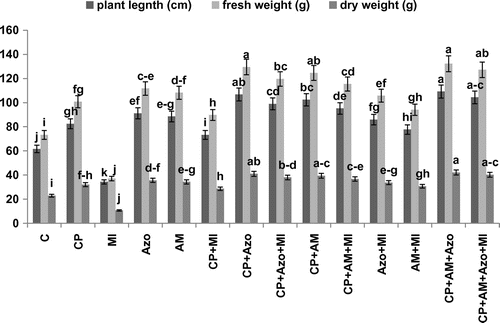Figures & data
Figure 1. Interactive effects of Meloidogyne incognita, Glomus fasciculatum, Azotobacter, in Calotropis procera-amended soil on the plant length, fresh, and dry weight of chickpea Cicer arietinum.

Register now or learn more
Open access
Figure 1. Interactive effects of Meloidogyne incognita, Glomus fasciculatum, Azotobacter, in Calotropis procera-amended soil on the plant length, fresh, and dry weight of chickpea Cicer arietinum.

People also read lists articles that other readers of this article have read.
Recommended articles lists articles that we recommend and is powered by our AI driven recommendation engine.
Cited by lists all citing articles based on Crossref citations.
Articles with the Crossref icon will open in a new tab.